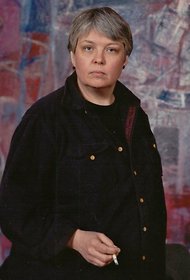Who: James Clerk Maxwell
When: He was born June 13, 1831 and he died November 5, 1879. (age 48)
Where: James was born in Edinburgh, Scotland. He went to the University of Cambridge. He died in Cambridge, England.
What: He studied Physics and Mathematics.
Why: Maxwell worked with a photographer named Thomas Sutton to make the first colored image.
How: Maxwell outlined his strategy for full color projected images in a paper in 1857. He accomplished the colored photo of the ribbon by taking three photos using filters on the lens of red, green and blue. He used stretched cellophane and lantern slides. The slides were made out of plates with the ribbon in bright sunlight.
I chose these photos because it shows what he looked like. Also, it shows the first color photograph that he did. You can see the ribbon he photographed with the three colors and notice how he put them together making other colors.
Ansel Adams 9/14/15
Who: Ansel Adams, an American photographer and environmentalist.
When: 1902-1984
Where: Born and died in California.
What: His black and white landscape photos of the American west, especially Yosemite National Park are widely known and reproduced.
Why: He used his works to promote the goals of the environmental movement. He was the record for what National Parks were like before tourism. Adams was a persistent advocate and helped expand the National Park system. His photos were shown in calendars, posters and books and still are today.
How: Adams made the “Zone System” as a way to have the right exposure and adjust the contrast of the final print. This clarity and depth set his pictures apart. Ansel mostly used large-format cameras for their high resolution. He preferred well thought out black and white photos.
I chose these pictures to show what he looked like and to show what his work mostly consisted of: black and white landscapes of National Parks.
Joseph Niepce 9/21/15
Who: Joseph Niepce, an inventor who is credited for the invention of photography.
When: 1765-1833 (age 68)
Where: France
What: He invented "heliography" which was a technique used to create the world's oldest photo (photoengraved printing plate)
Why: He was interested in new art but thought it lacked skill so he began making his "light paintings", he inspired Henry Fox Talbot.
How: He used a primitive camera, a device that led to the photographic camera (a box with a hole in one side in which light travels through)
I chose this photo because it is the one that Joseph made which is the longest surviving picture of a real world scene (1826).
Jan Groover 9/28/15
Who: Jan Groover, American photographer
When: 1943-2012
Where: Born in New Jersey and died in France, went to Pratt Institute and Ohio State University.
What: Noted for the use of emerging color technologies
Why: She used platinum prints and transformed everyday things into still lifes, these still lives got a lot of recognition from magazines and museums.
How: Jan used 20th century camera technology like the banquet camera for horizontal photos.
I chose this photo because it shows one of her famous still lifes.
Roy Decarava 10/5/15
Who: Roy was an African-American photographer
When: 1919-2009
Where: Harlem, New York City
What: He was the first African-American photographer to win a Guggenheim fellowship in 2006.
Why: He encouraged other photographers to believe in photography and he established a photo gallery in his apartment.
How: He produced 5 major books and had 15 single artist exhibitions.
I chose this photo because Lamont Hamilton showed me this one and it demonstrates how well Roy played with brightness and darkness.
George Hurrell 10/12/15
Who: George Hurrell, American photographer in the 30s and 40s
When: 1904-1992
Where: He was born in Ohio then lived in Chicago, Illinois. He moved to Laguna Beach, California.
What: He had a huge contribution to the image of glamour presented by Hollywood through portraits.
Why: He worked to take images of people but mold them into something more glamorous and sophisticated.
How: He often used a key light on the side above the face and one behind for a back light.
I chose this photo because I think it shows his depth and glamour that he tried to portray.
Paul Caponigro 11/2/15
When: Paul was born December 7, 1932.
Where: He is from Boston, Massachusetts.
What: Paul focuses on landscape and still life photography.
Why: He had a strong passion in music and began to study at Boston University's school of music before deciding to study photography at the California School of Fin Arts.
How: He teaches photography part-time at Boston University.
I chose this photo because it shows one of his still lifes and it has great detail and cool lighting/shadows.
Who: Douglas Kirkland, prominent photographer based in the United States who photographs many famous people.
When: Born in 1934, still alive.
Where: Toronto, Ontario
What: He was hired by Look magazine as a staff photographer then later by Life magazine.
Why: He was a great photography innovator and he was also a part of the motion picture industry.
How: He got famous for his photos of Marilyn Monroe in 1961.
I chose this photo because the warm lighting and back lighting looks nice.














